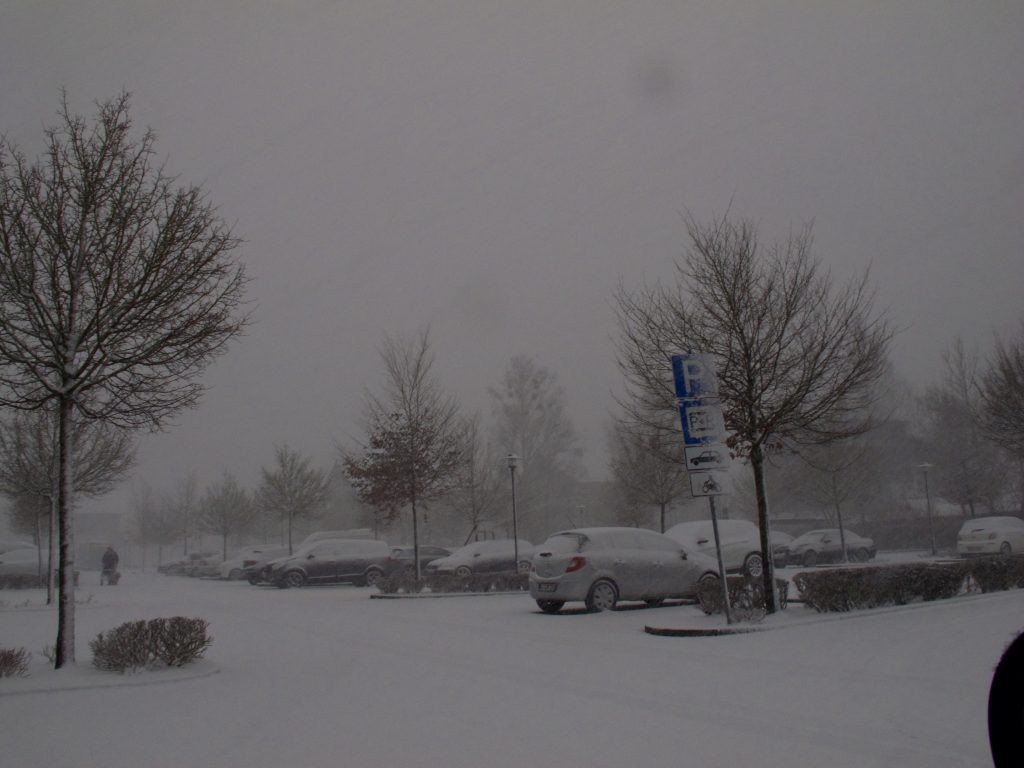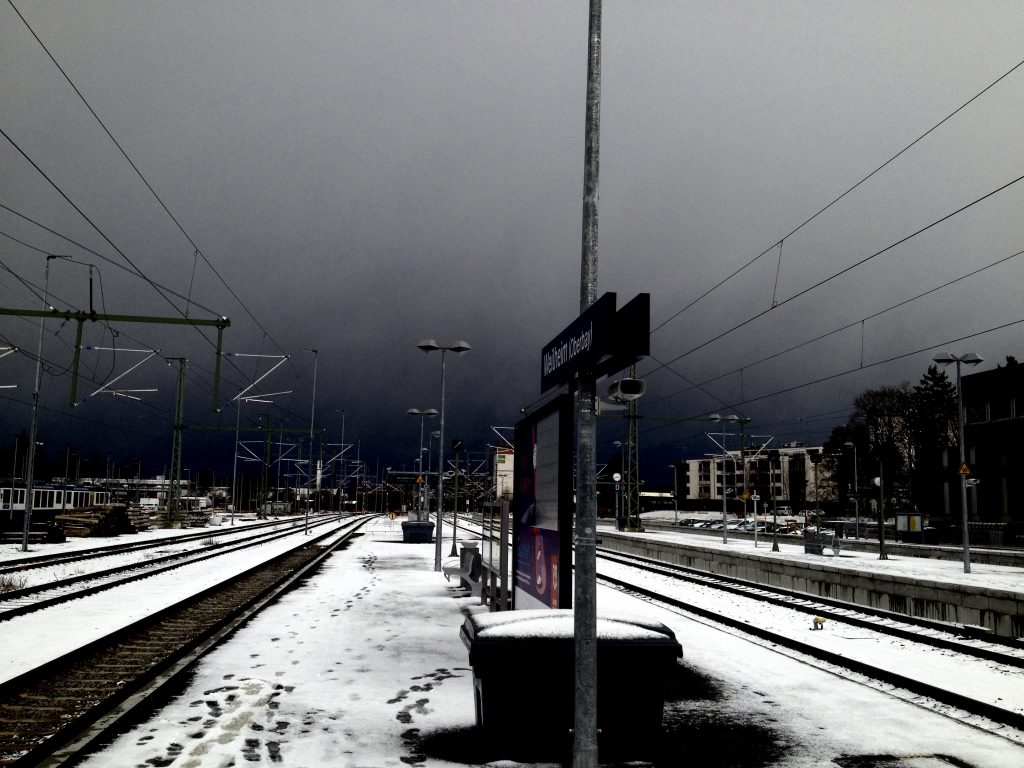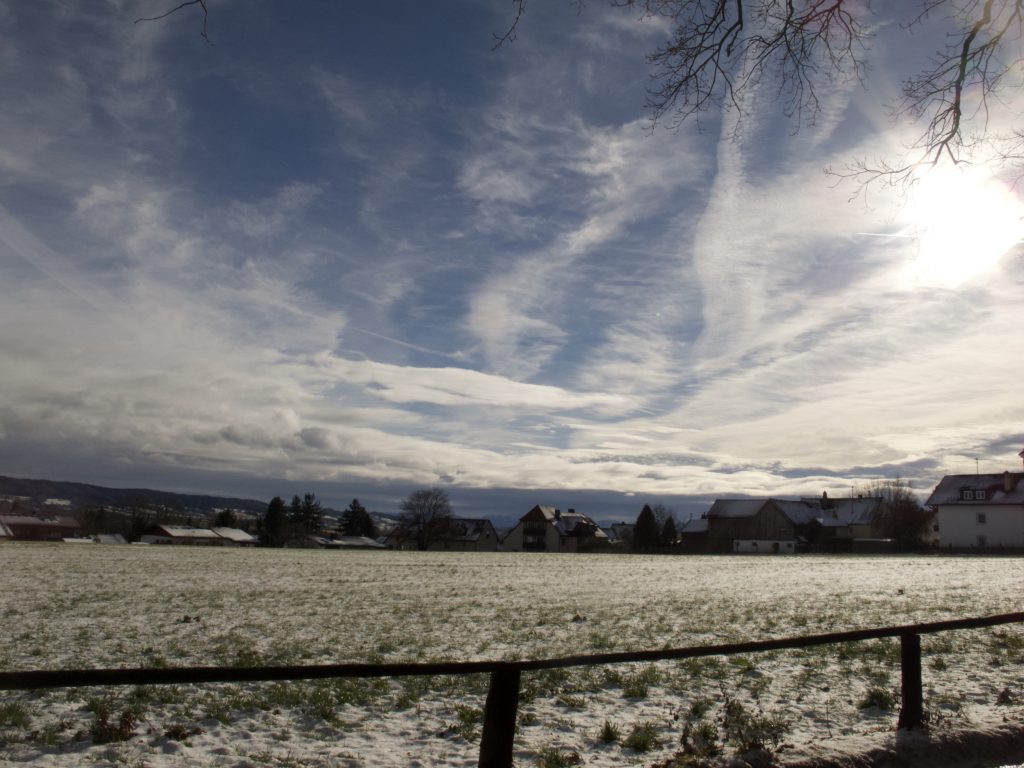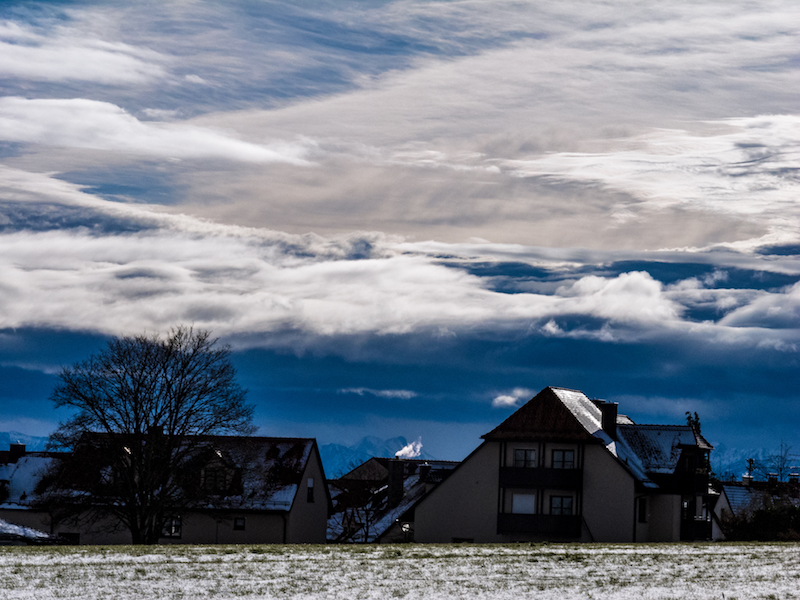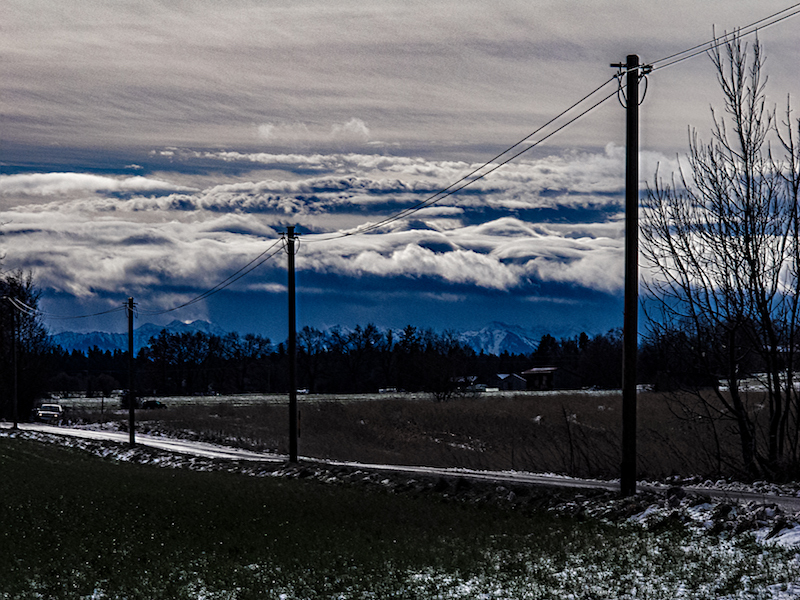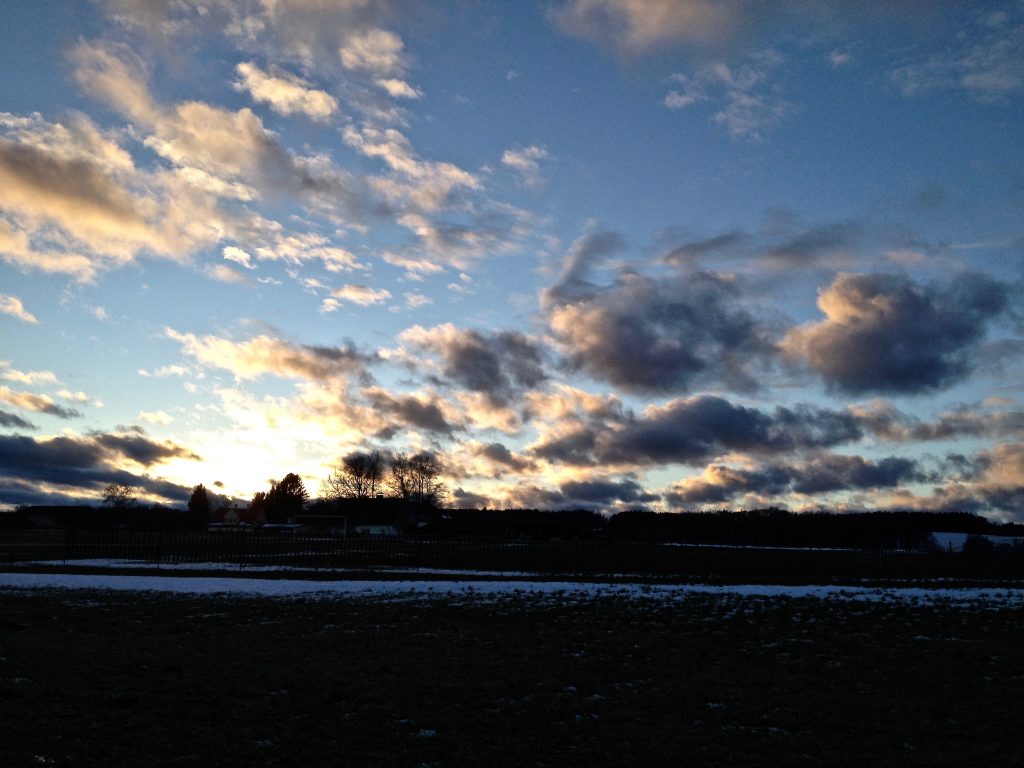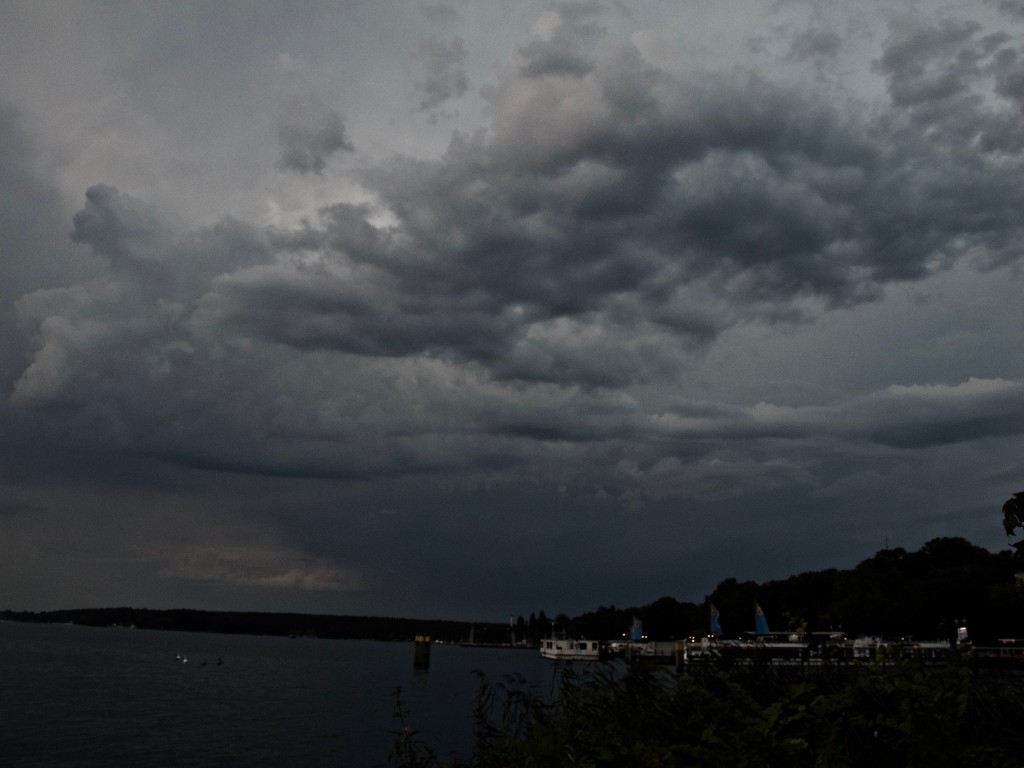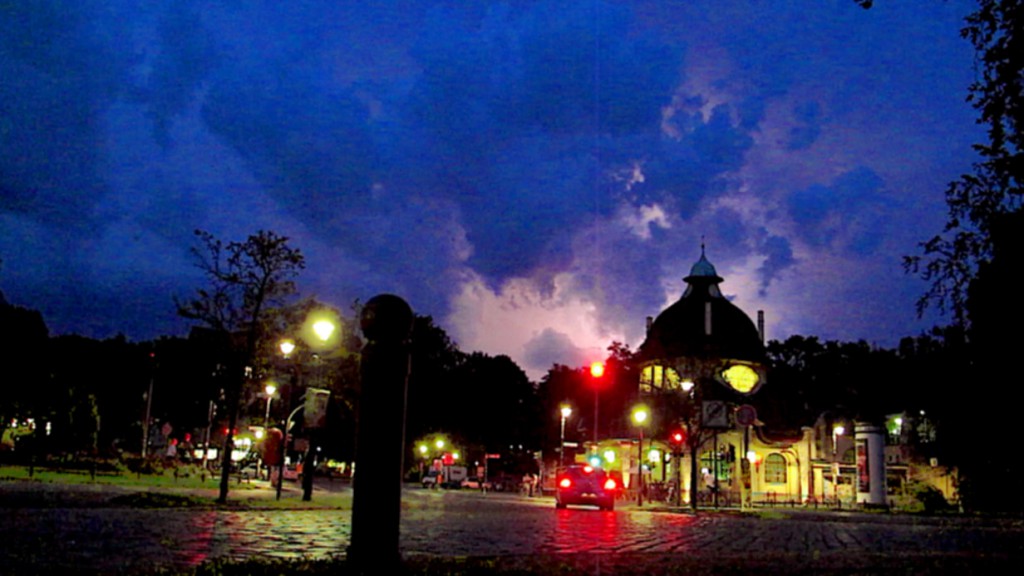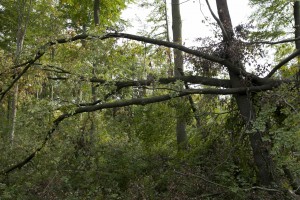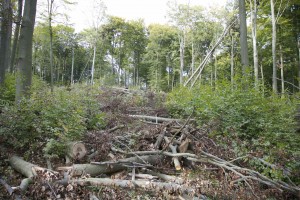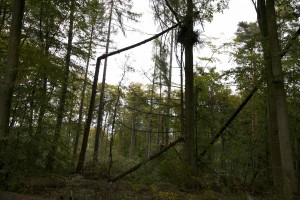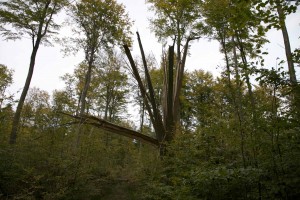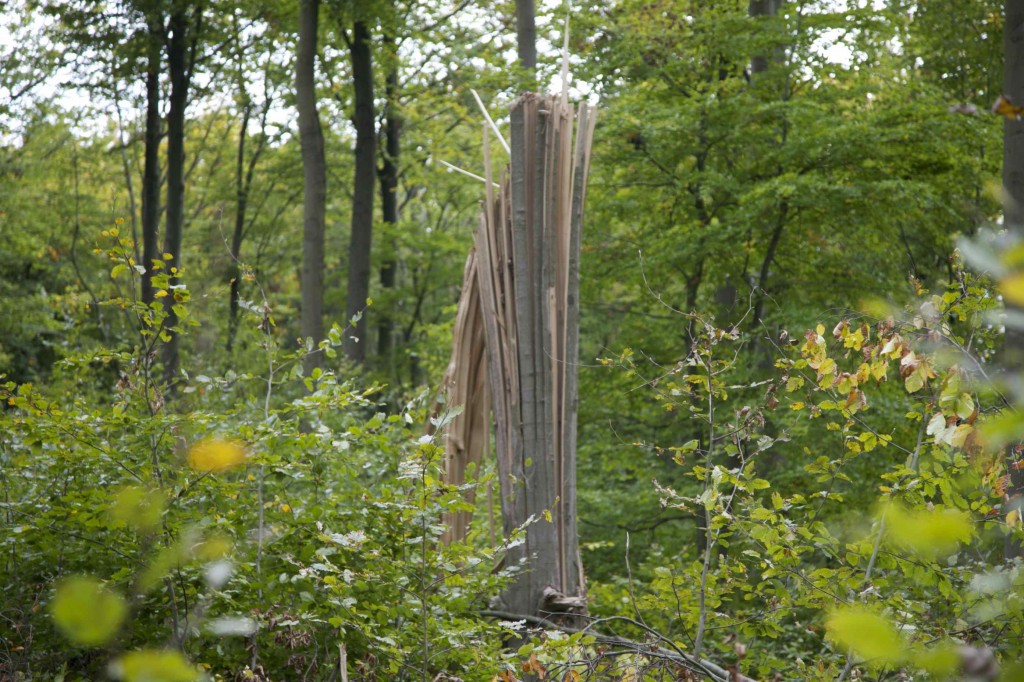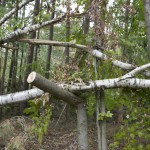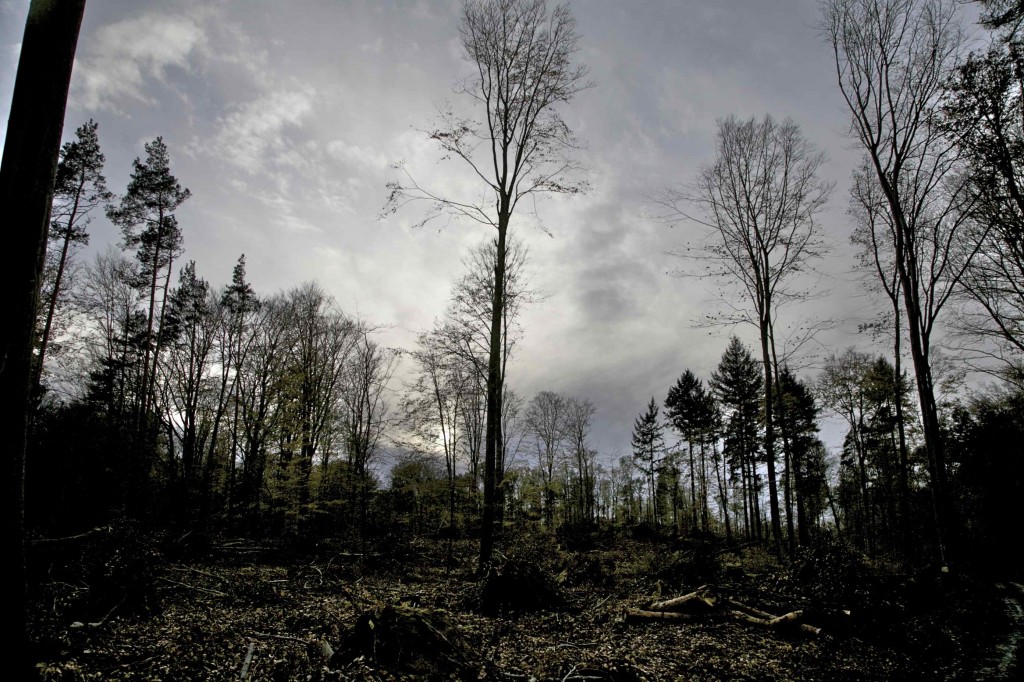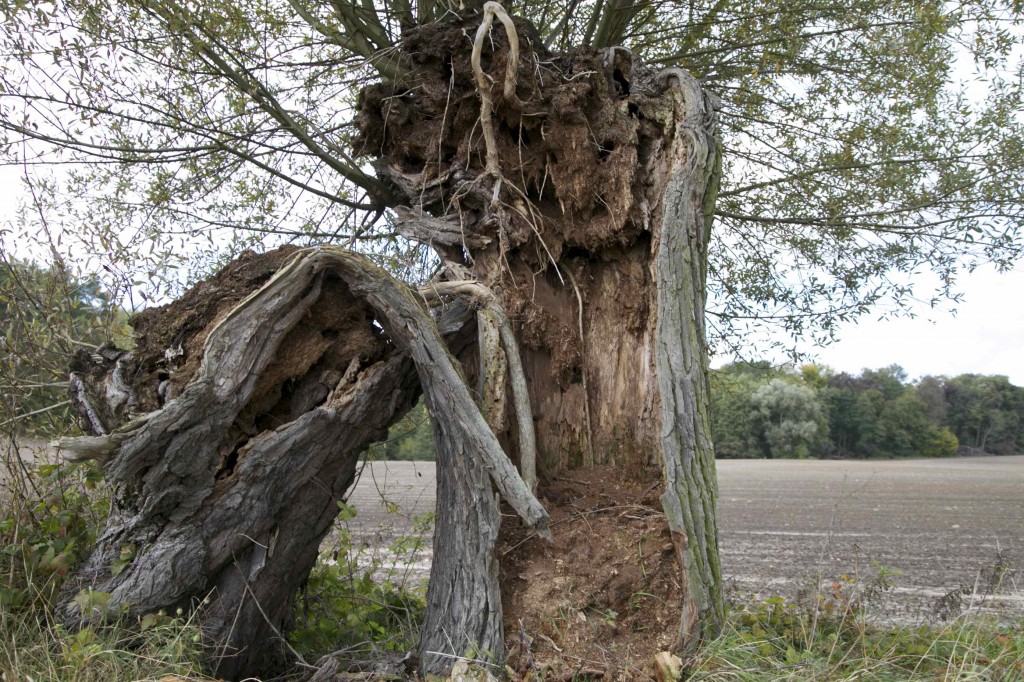January 16-18: “Friederike” Strongest Winter Storm In Germany Since Kyrill
After a calm but grey weekend and a calm Monday, the wind freshened up on Tuesday, January 16. On Tuesday morning there was a turbulent sky with fast moving clouds in Southern Germany. There was rain in the afternoon. But on the next day with the public in the wake of Winterstorm Friederike, which was announced to arrive on Thursday, weather in many parts of Germany was getting extreme. Already in the night, there had been accidents due to winter-thunderstorms.
In Bavaria, Wednesday morning started still relatively calm but in Southern Bavaria around the lakes and in the South-West it was already day when it looked like the night would fall again at 8.00am in the morning.
Suddenly it became darker and darker. A snowstorm set in and there was lightning and thunder. Within minutes a lot of snow fell and streets became slippery. There was also hail. After ten in the morning the sky cleared up, even the sun was shining shortly but it was a day with many more showers. It was windy all the day.
There was a bit more snow in the night. In the morning it felt warmer. Then, on Thursday, the wind was picking up speed. Storm-warnings were issued before. Weather models did still slightly differ on Thursday morning but the storm hit mostly the middle of Germany as expected. But also in Southern-Germany, there were really strong winds.
Friederike was soon suspected to be the strongest winter storm since Kyrill which was exactly the same day, on an Eighteen January. Indeed, the storm already caused many accidents and did damage even before it crossed over Germany.
In the early afternoon, there were still different forecasts if the storm would increase in the early evening hours or if the weather would calm down. Many schools were closed for the afternoon, Flights from Munich got canceled, trains were delayed. In the late afternoon, Deutsche Bahn shut down its long-distance travel.
At 4.30pm, Januar 18, the sky is mostly clear, but the wind is still very strong. Most of the snow is molten away and a brook is running down the street.
The aftermath: As the weather calmed down in the night, the news showed the colossal damage which Friederike did. Due to its extreme wind speeds, it made it into the top five of monstrous windstorms in Europe over the last 30 years.
By Peter Engelmann
https://youtu.be/P5T0oWqGT8M
